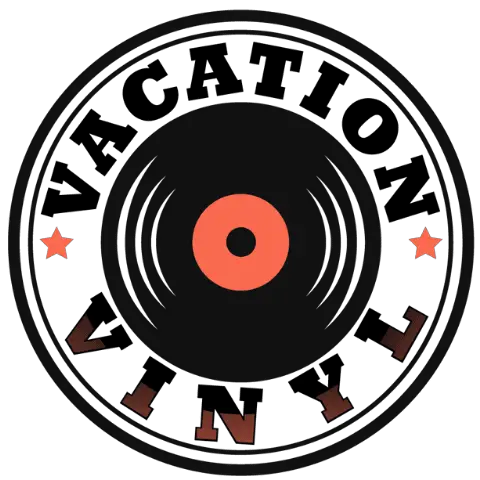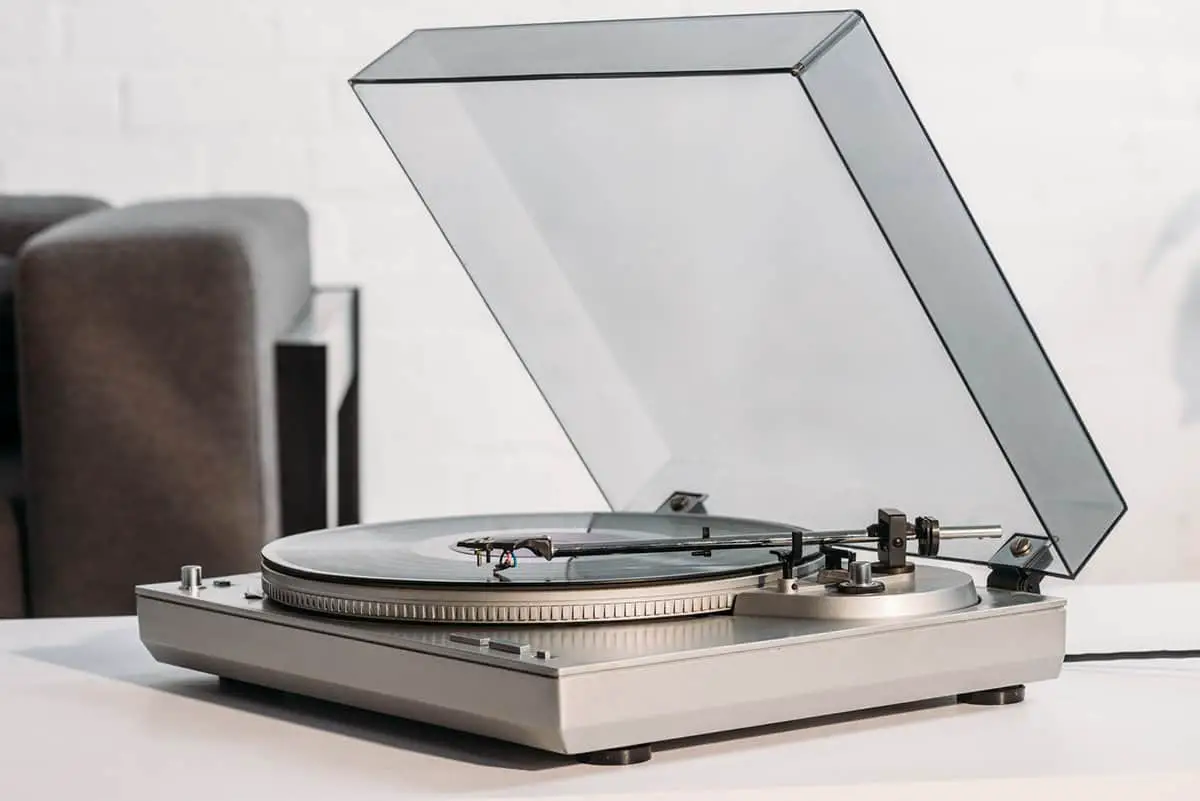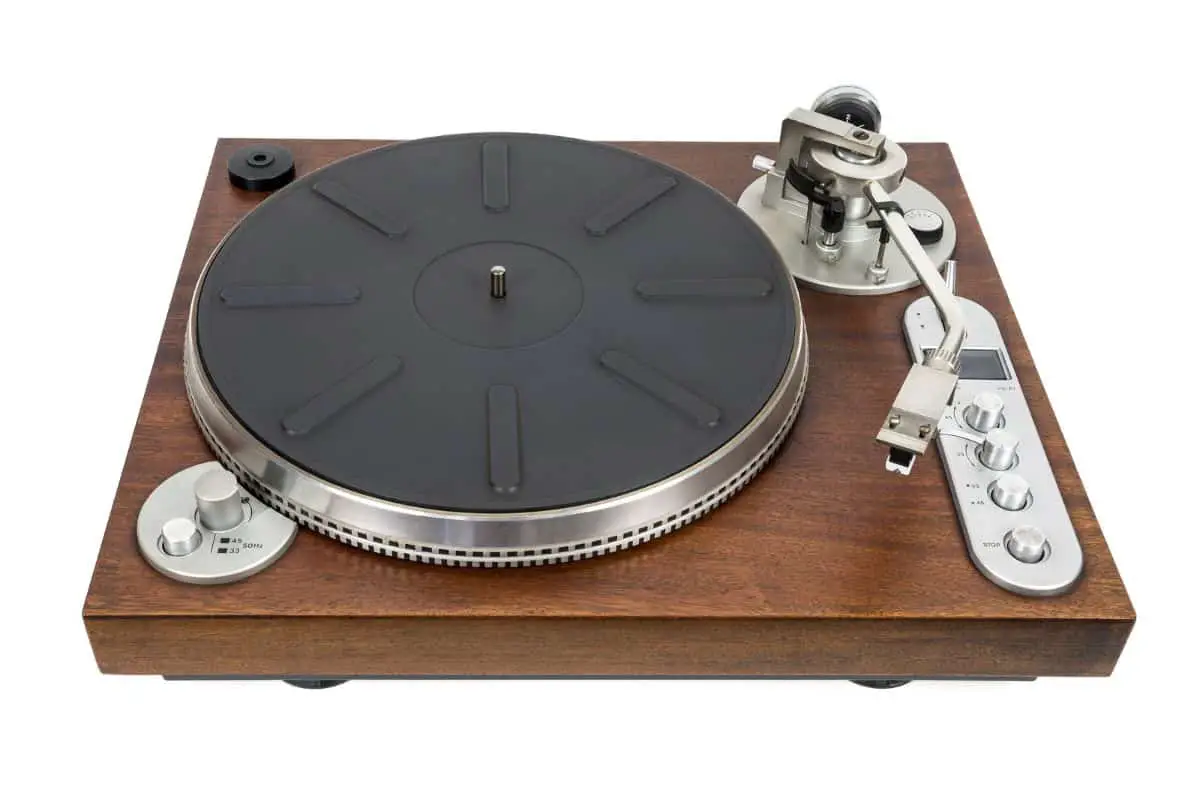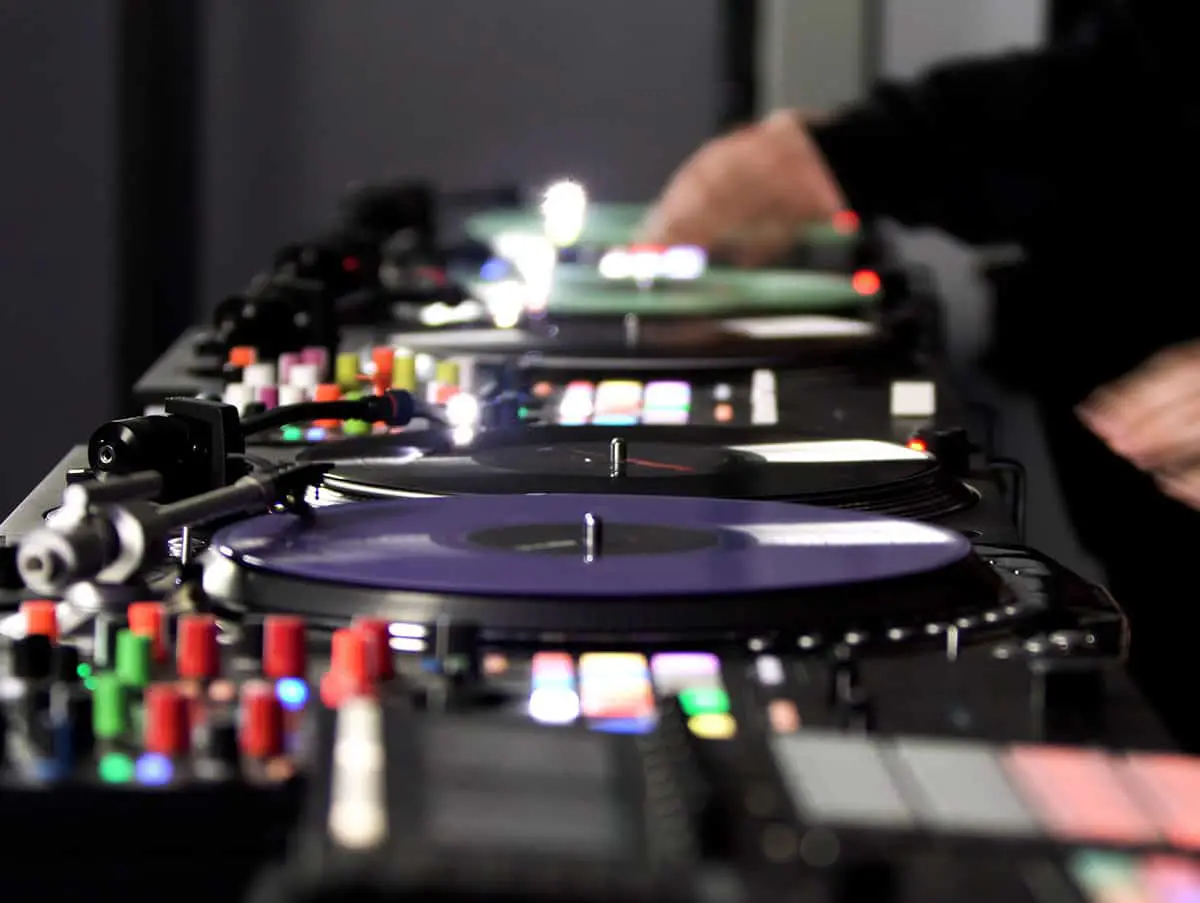This post contains affiliate links.
Knowing how to make a turntable Bluetooth compatible makes it easier to enjoy your favorite tracks. You can connect the turntable to your wireless headphones, speakers, and other devices. Some modern turntables come with this feature, but you can easily add it to many models.
Here are a few different ways to make any turntable wireless with Bluetooth:
- Add a Bluetooth transmitter to the preamp.
- Add an external preamp if needed.
- Pair your devices and stereo system.
- Consider a hybrid turntable.
- Add Bluetooth to a vintage turntable.
Adding Bluetooth to any turntable is easy! I made sure to cover everything on setting up Bluetooth on your turntable so that you can follow along with the article. Let’s get started.
Table of Contents
1. Add a Bluetooth Transmitter to Preamp
You can convert any turntable to Bluetooth using a Bluetooth transmitter and receiver. You’ll want to do this with a model that doesn’t already have Bluetooth built-in. For the transmitter, you have a lot of options on LINE! However, you’ll need to make sure it has analog inputs and supports aptX Bluetooth.
I recommend the Hsoipn Bluetooth 5.0 Transmitter and Receiver on Amazon. It works well to convert multiple devices to Bluetooth and do the same for your record player. The transmitter also comes with high fidelity audio and has a listening range of up to 33 feet (10.05 meters). Lastly, it offers a dual connection, so two people can listen simultaneously.
Before ordering one, check the outputs on your record player, it’s most likely RCA. So in that case you need 2 RCA Male Cable to 3.5mm Female to be able to connect the Bluetooth transmitter. (available on Amazon) Then, once you have your transmitter ready, you’ll need to connect it to the preamp on your turntable.
If your turntable has a built-in preamp, you’ll need to plug the transmitter into the RCA output. However, if you have an external preamp, you’ll need to connect the transmitter to the PHONO output there. It won’t work if you have an external preamp, but still, plug the transmitter into the turntable.
From there, you’re ready to listen to your favorite tracks through Bluetooth! It’s a very simple setup process, and you can redo it any time you need to.
How Do Bluetooth Transmitters Work?
Bluetooth transmitters work by converting the audio from the turntable to a file that your Bluetooth device can read through radio waves. You can easily connect your turntable with many different devices this way.
Bluetooth transmitters are required to listen to music through Bluetooth headphones but don’t have a turntable with it preinstalled. It’s helpful to have a transmitter at home because it works with so many electronics- you can even use it on your TV.
Since the transmitter does compress the audio, there is a loss of quality. If you’re looking for the highest fidelity setup, then you’ll want to stick with wired options. However, Bluetooth offers more portability, which some people prefer. The setup process is often much more convenient as well.
Overall, Bluetooth converters can add Bluetooth to any device. It makes it simple to cast audio to wireless headphones, speakers, and virtual assistants like Alexa.
2. Add an External Preamp if Needed
Some turntables won’t come with an external preamp. If you plug the transmitter directly into a turntable without one, it won’t work. You’ll need to add one first. The preamp converts the PHONO signal into a LINE signal, which audio devices can read.
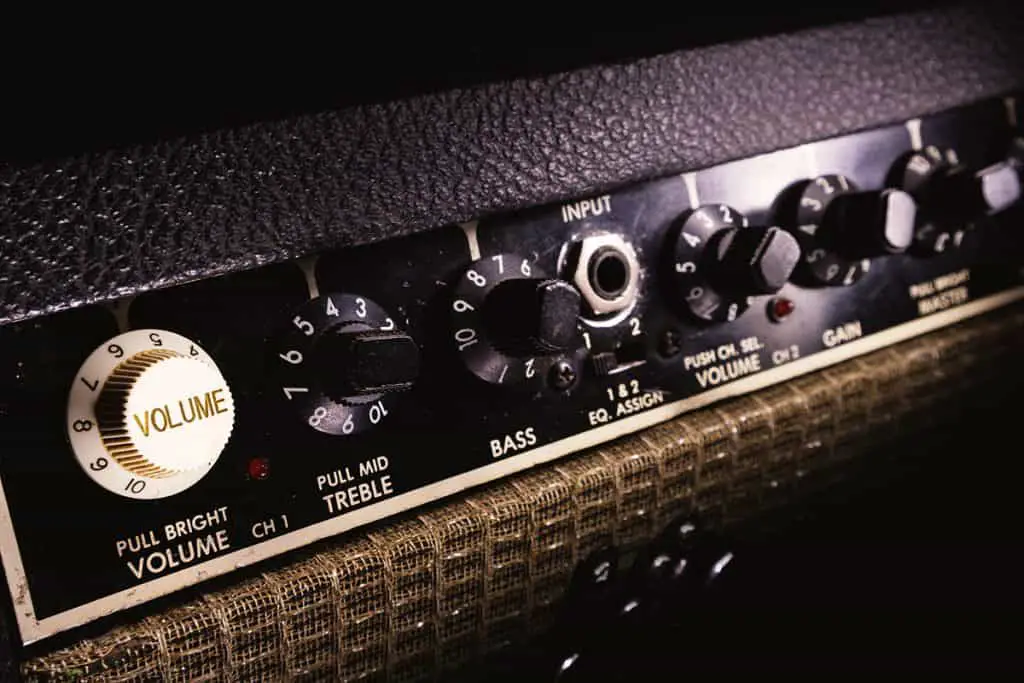
The PHONO inputs on the preamp should connect to the PHONO outputs on your turntable. The preamp’s LINE output connects to the Bluetooth transmitter since that’s what will act as your speaker.
In short, you won’t be able to add Bluetooth without a preamp on the turntable. I recommend the Pyle Phono Turntable Preamp from Amazon.com if you need to buy one. You can use it with any turntable! It even works with vintage models to connect the turntable to modern sound equipment.
How To Tell if Turntable Has a Preamp
You’ll want to know how to tell if your turntable has a preamp. You’ll want to check for a PHONO/LINE switch on the back of the device. Putting the switch on LINE mode will activate the preamp.
If the turntable doesn’t have a built-in preamp, you’ll only see PHONO on the back. You’ll need to get an external preamp. You can also tell because the music will sound quiet and won’t have a strong baseline.
3. Pair Your Devices and Stereo System
Next, you’ll need to know how to pair your devices with the turntable. Ensure the Bluetooth transmitter is connected correctly and fully charged before using it. Then, turn on the transmitter.
You should be able to find it while your devices are in pairing mode. Every headset does have a different way to activate pairing mode, so you might need to check online for your specific model. Once paired for the first time, your devices should connect automatically when turned on.
Overall, connecting to the turntable with Bluetooth is easy! It should only take you a few seconds.
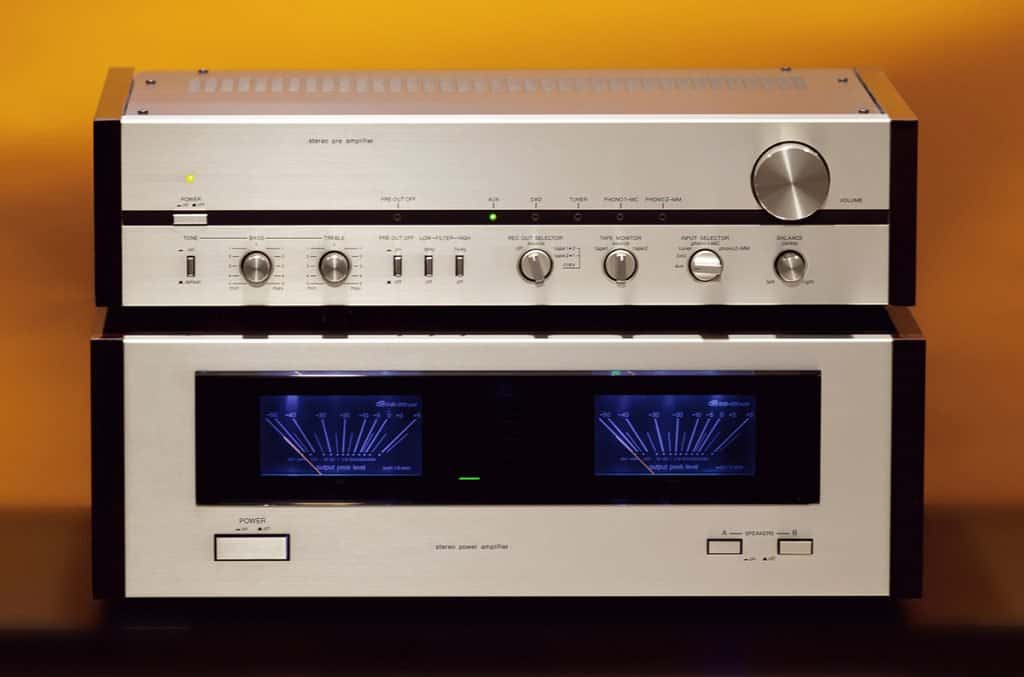
What To Pair With Your Turntable
You have many options with what you can connect to your turntable! As long as the audio device has Bluetooth and can play sound, you can connect it. Many people connect their wireless headphones and speakers to the system.
If you’re looking for a Bluetooth speaker set, you should look into the Cyefacha Bluetooth Bookshelf Speakers on Amazon.com. You can pair your turntable with it and connect it to your laptop or smartphone when needed. It even comes with wire inputs, so you can use wired connections if you have to.
4. Consider a Hybrid Turntable
If you’re looking to buy a new wireless turntable, you may want to choose one that has built-in Bluetooth. A hybrid turntable usually comes with multiple ways for you to connect to the device. For example, the player could come with both Bluetooth and Wi-Fi connectivity. Some hybrid turntables also offer CD readers.
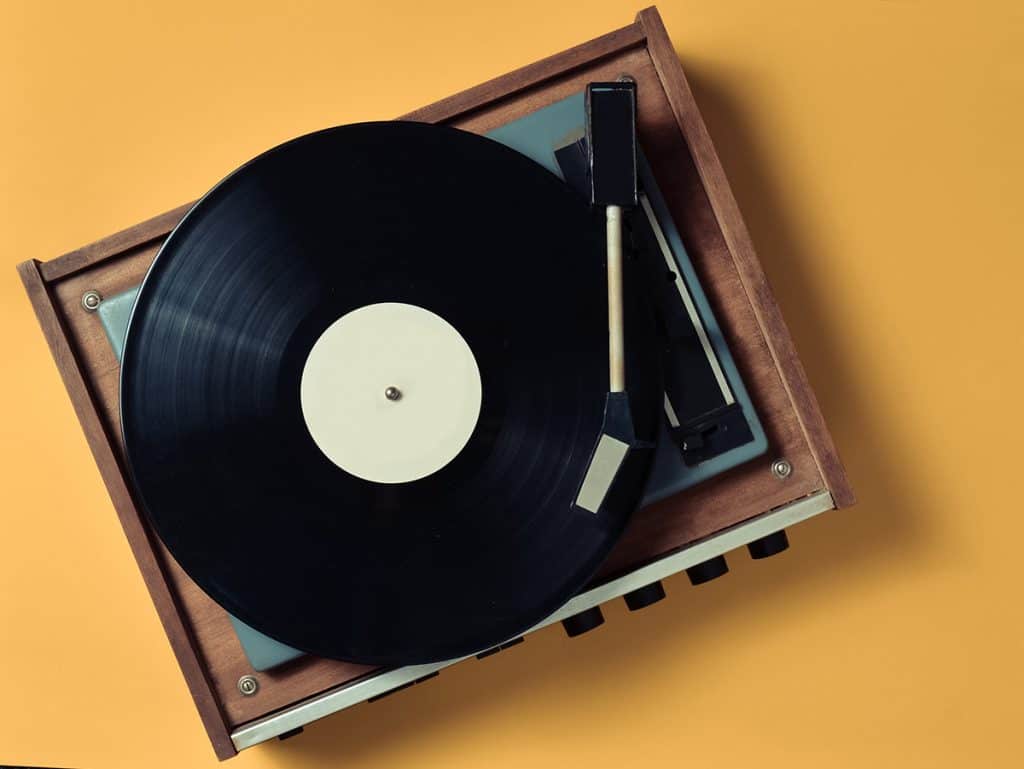
Using a turntable that comes with Bluetooth built-in saves you the hassle of needing to buy a Bluetooth transmitter, a converter, and an external preamp. You also avoid having to connect all of those items to one another. Many people prefer this option when looking for a modern record player because it’s simpler.
Additionally, make sure that your current speakers aren’t Wi-Fi only. You wouldn’t be able to connect to them with Bluetooth, even after setting it up correctly on your turntable. A hybrid set would offer both connection options to work with your Wi-Fi speakers.
Overall, you’ll want to think about how you want to listen to the turntable before buying one. If you’re going to listen using different devices, having a turntable with multiple ways to connect is best.
5. Add Bluetooth to a Vintage Turntable
Since all you need to add Bluetooth to a turntable is a preamp and Bluetooth transmitter. This method works even for vintage record players! You can connect your vintage record player to your Bluetooth speaker or headphones for an entirely new listening experience.
Most older turntables won’t have a built-in preamp, so you’ll need first to make sure you have one. From there, plug your transmitter into the preamp. If you want to follow along with a YouTube video, watch this:
Overall, many vinyl lovers are surprised to learn that it’s straightforward to set up Bluetooth on their old record players. It’s the same process you use to set up Bluetooth on modern models. If you already have a record player at home, you don’t need a new one to enjoy Bluetooth compatibility!
Benefits of Using Bluetooth With a Turnable
Are you wondering why you should connect your turntable with Bluetooth? There are many benefits that you can take advantage of. Many people enjoy having fewer cables to manage and enjoy taking their music around the house with them.
Here are all of the benefits of setting up Bluetooth on your turntable:
Fewer Cables
Having fewer cables is beneficial for many reasons. You won’t have to deal with hiding the wires to keep your space looking nice. Plus, it’s easier to set up the record player anywhere. Without all those cables coming out of the back, you can put it somewhere more convenient.
When people install Bluetooth on their turntables, they usually think of this benefit first. I’m confident your record player could also benefit!
Can Easily Move the Turntable
Using Bluetooth also makes it easier to move the turntable whenever you need to. You can take it anywhere to get power and still listen to your favorite music through Bluetooth. If you want to bring your music outside for a special gathering, you can do so easily.
Suppose you often move your furniture or take the turntable with you during the day. In that case, it’s possible with Bluetooth connectivity.
More Portability
Plus, your vinyl records get more portability overall. You can find Bluetooth transmitters that offer long-range listening, allowing you to move around the home. At the same time, you can listen to your favorite records no matter where you go.
If you want to do chores, sit outside, work out, or clean while listening to your music, you can easily do so without any wires holding you back.
Most Bluetooth transmitters have at least a range of 30 feet (9.14 meters). This option is plenty for most homes! You can likely go upstairs without breaking the connection unless you have a very large house. It’s possible to find options that can reach much further than that if you need them.
Easily Connect to More Devices
Bluetooth is a universal connection- you can find thousands of Bluetooth-compatible devices that you can connect with your turntable. Plus, some transmitters allow you to connect multiple devices at once.
Overall, you’ll have no problem connecting to a variety of devices- without having to change the wires and connections every single time.
Easy Setup
Lastly, setting up Bluetooth is very easy. It shouldn’t take you very long, whether or not you have any experience using it. Simply put your devices into pairing mode, then connect your turntable with them.
Most Bluetooth headphones and speakers will give you audio cues and use flashing lights to tell you when they’re in pairing mode. They’ll do something similar to let you know that you’ve successfully connected to your turntable. Many devices make it obvious to connect with Bluetooth.
Plus, most devices will save their previous connections, allowing them to connect with your turntable as soon as you turn on the transmitter. Setting up later only takes a few seconds after you’ve turned the transmitter and receiver on.
Are There Wireless Alternatives to Bluetooth?
There are wireless alternatives to Bluetooth. Bluetooth is the best option for wirelessly connecting a turntable to your speakers or headphones. However, some turntables also use Wi-Fi to connect to speakers. There are several pros and cons to using Wi-Fi on a turntable.
The biggest con to using Wi-Fi on a turntable is that your music will stutter or stop when you don’t have a strong Wi-Fi connection. If you have issues with your Wi-Fi, it’s not the best choice for you to use at home.
However, music tends to sound better when broadcast through Wi-Fi when compared to Bluetooth. Bluetooth compresses audio, which then needs uncompressed after transmitting for you to hear it. Compression can lower the quality of the sound.
That said, Bluetooth is still the best option for most people to use with their turntables. Your music won’t stop if your Wi-Fi runs into connectivity issues!
Final Thoughts
In short, you can connect your Bluetooth-compatible devices with a turntable through a transmitter. The transmitter should connect to your preamp, whether you have an external or internal one.
This method should even work for vintage turntables! Many vinyl lovers use Bluetooth for its portability. You can use it to listen to your music anywhere in the house. Plus, you won’t have to deal with as many wires.
Related Articles
- What Are Bluetooth Record Players And Are They Worth It?
- 15 Best Record Players With Bluetooth (Wireless Turntable)
VacationVinyl.com is a participant in the Amazon Services LLC Associates Program, an affiliate advertising program designed to provide a means for sites to earn advertising fees by advertising and linking to Amazon.com. We also participate in other affiliate programs which compensate us for referring traffic.
